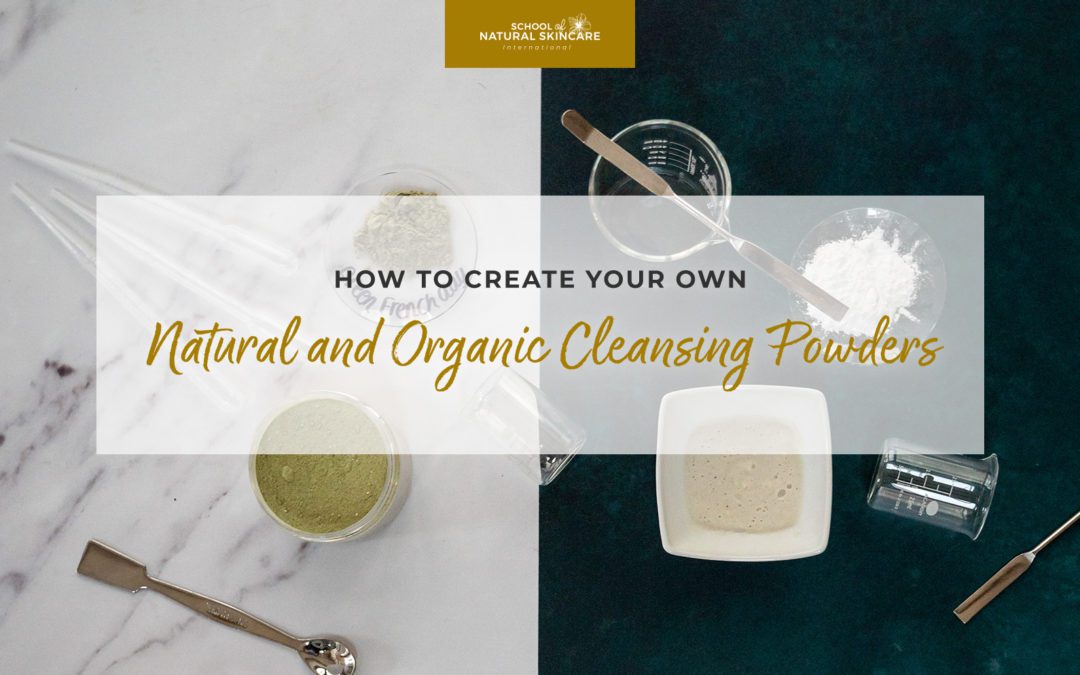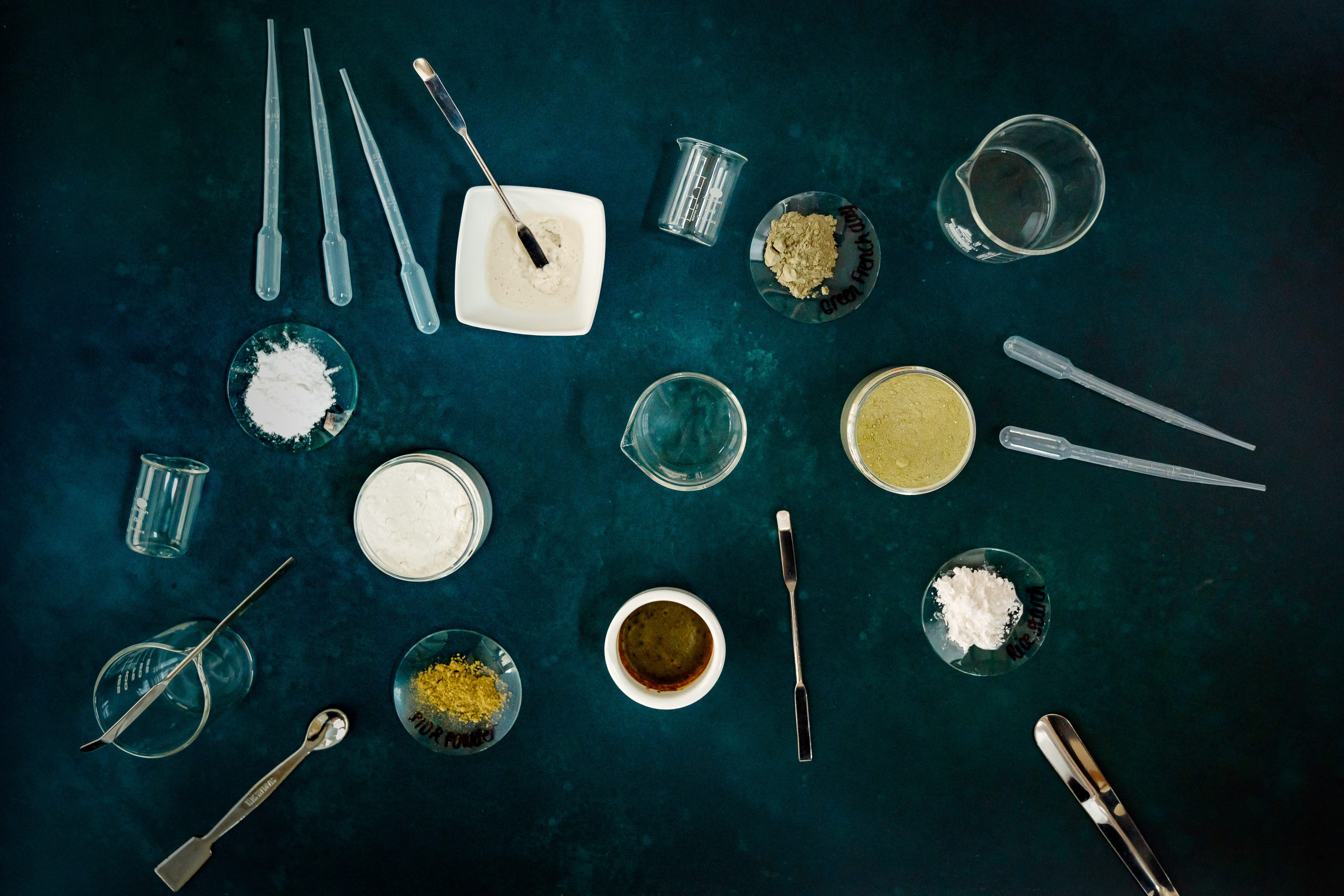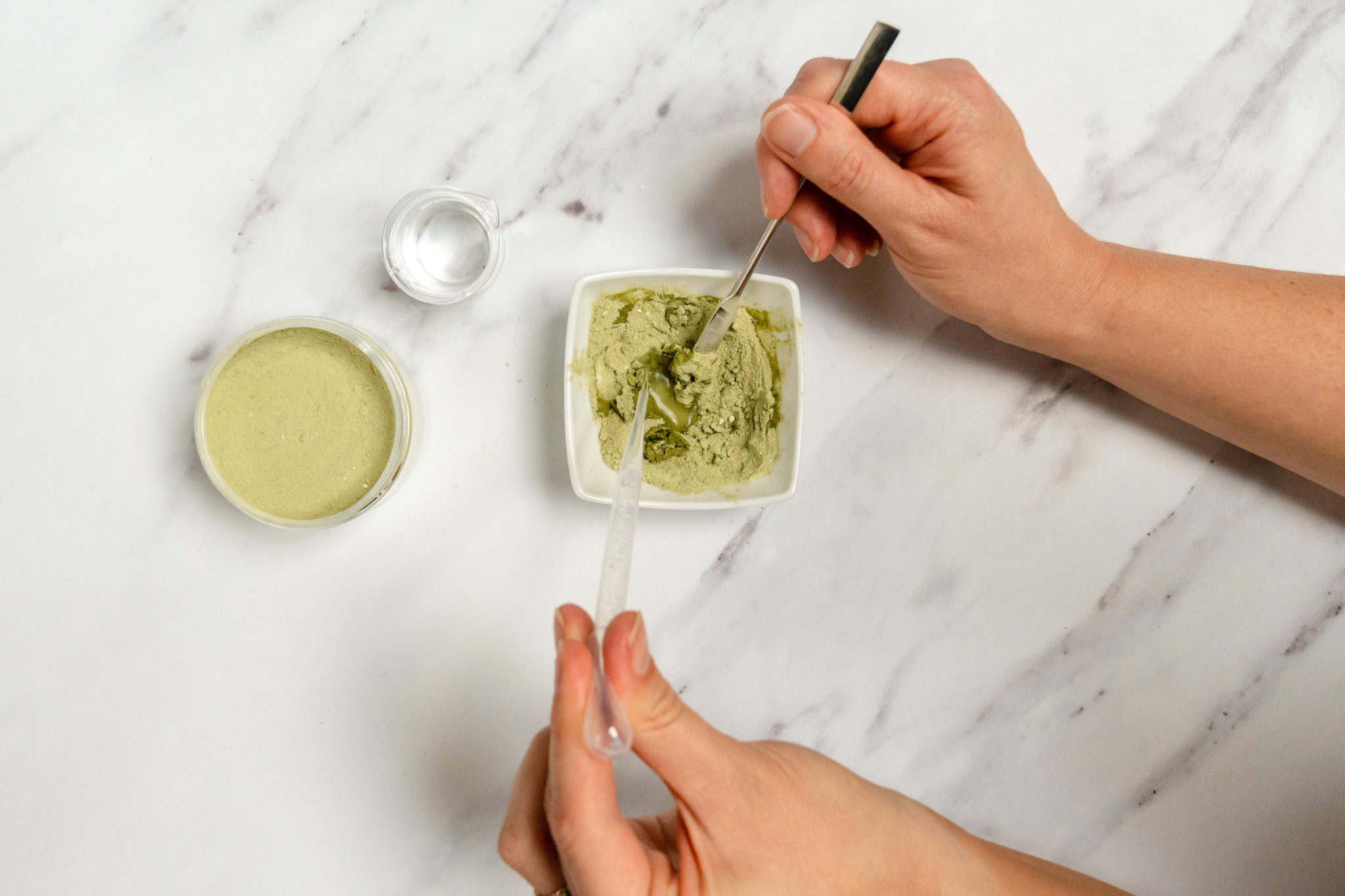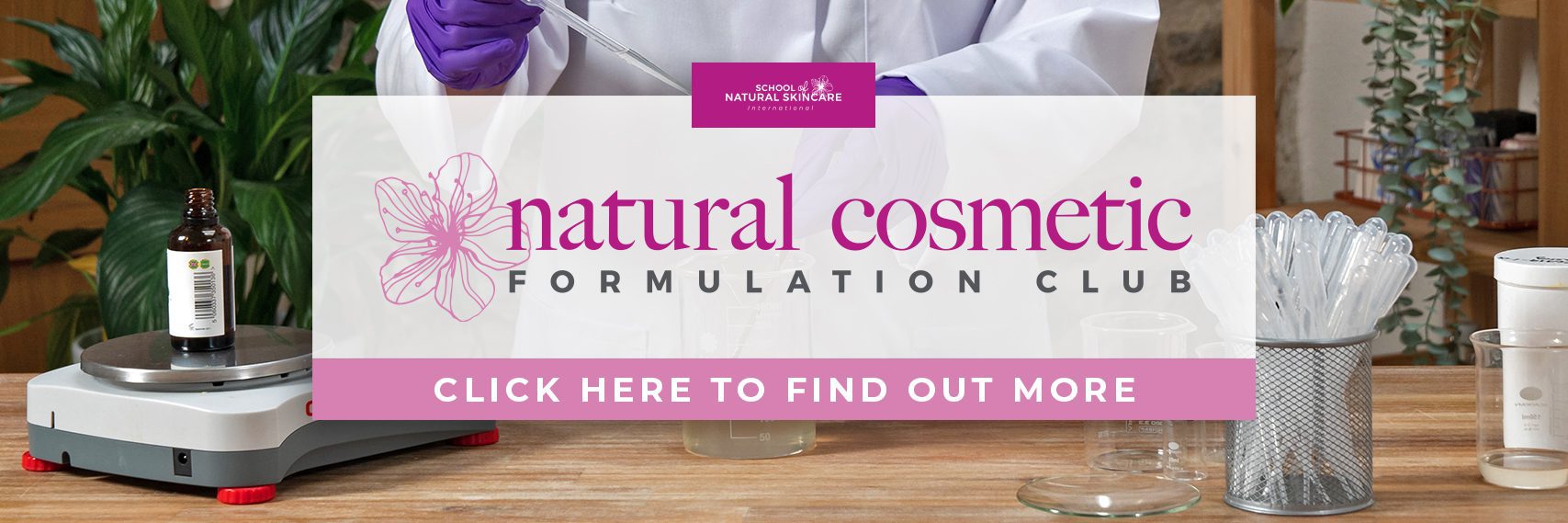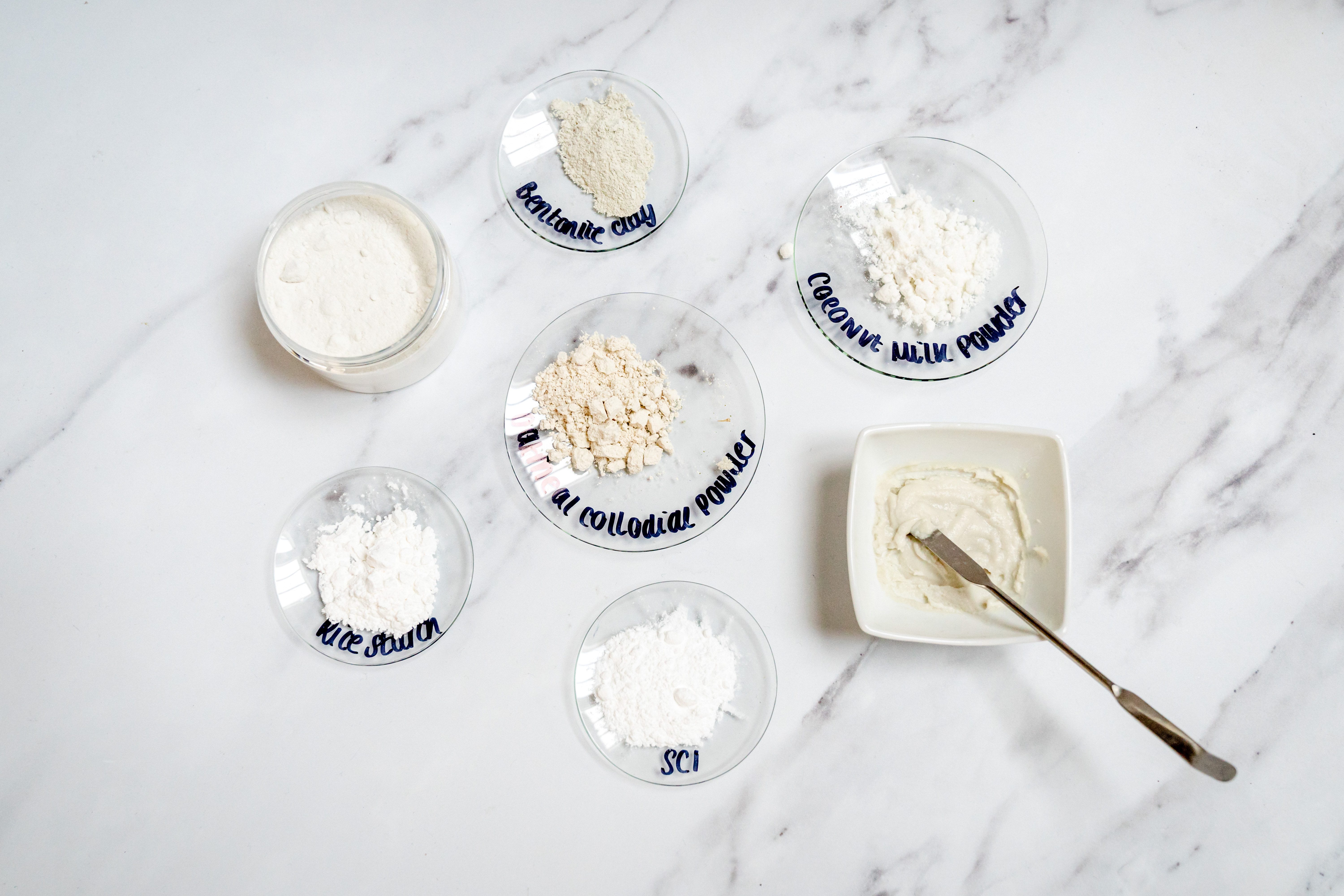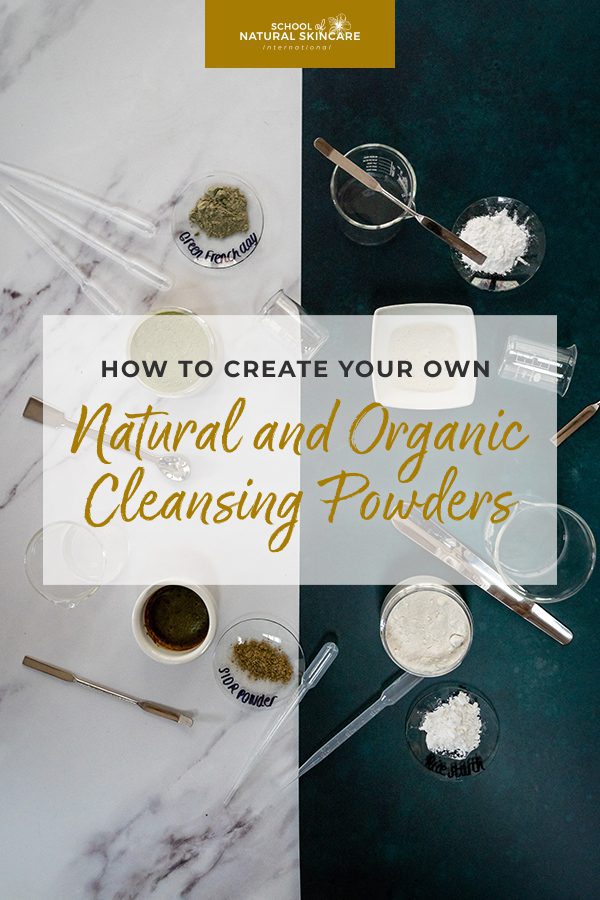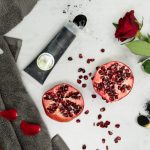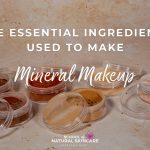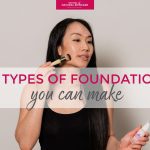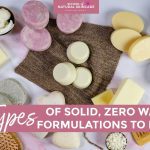What are cleansing powders?
Today, more and more facial cleanser options are available than ever before. Gels, liquids, lotions, balms, oils, milks… the choice is yours. Less known to many parts of the world, but long-used in East Asia, are cleansing powders. And they are fast becoming the must-buy cleansing product in skincare regimens.
Cleansing powders are a type of facial cleanser sold in powder form. They contain powdered, water soluble ingredients, including powdered surfactants, and are combined with a small amount of water by the user to form a thin, paste-like consistency just before use.
Surfactants, or ‘surface active agents’, are amphiphilic – meaning they contain a hydrophilic (water-loving) head and a hydrophobic (water-fearing/oil-loving) tail.
Due to the surfactant’s structure they are able to remove oil soluble as well as water soluble dirt and grime from the skin, such as sunscreen and sebum.
If you’d like to know more about surfactants, you might like to read our article Natural surfactants in cosmetics: What are they and how do they work?
Powdered surfactants give cleansing powders their cleansing function. Once mixed with water this type of cleanser acts as a water-based cleanser which is effective at removing water soluble dirt and grime from the skin.
This type of formula does not contain any hydrophobic/lipophilic (oil-loving) ingredients, therefore they only have a limited ability to remove oil or silicone-based products such as liquid foundations, SPF products and high levels of sebum. Water-based cleansers are therefore recommended for use in the morning or as a second cleanse in the evening after an oil-based cleanser or cleansing lotion has been used.
What are the benefits of using and formulating cleansing powders?
There are so many benefits of using and formulating cleansing powders.
These waterless products are popular with consumers due to their environmentally friendly and sustainability credentials. They also last much longer than a liquid cleanser, and the dry formula is great for travel!
Cleansing powders are enjoyably easy to formulate and make. They appeal to consumers as they give a spa-like experience due to ‘activating’ the product at home before use. They can also contain colorful and exciting active ingredients such as matcha green tea, which is a powerful antioxidant.
In addition to this, one of the main benefits of formulating this product is the fact that no preservatives are required in this formulation. Water is only added to a small amount of this powder-based product just before use, so there is no need for a preservative.
Many consumers love to buy ‘preservative-free’ skincare products, so this could add appeal to your brand!
Subsequently, another benefit is that there is no requirement for microbial testing such as preservative efficacy testing (PET), saving time and money.
What ingredients are used in cleansing powders
An exciting array of ingredients are possible in cleansing powders. Most are either starch/clay or milk powder-based, plus a surfactant such as sodium cocoyl isethionate (for those all-important cleansing properties).
Powders can range from various plant- or animal-based milks, and starches and clays include options such as corn, tapioca and white rice starch powder, bentonite clay and ultra-ventilated green French clay.
Appealing and interesting active ingredients can also be added for the specific functions they offer, such as antioxidant, anti-inflammatory or soothing properties. Sidr (jujube) powder, matcha green tea powder, aloe vera powder, white willow bark powder, and Vitamin C powder can all be used in cleansing powders, to great effect.
Are cleansing face powders organic?
Cleansing powders can contain surfactants that are naturally derived and accepted in natural certifications. They can even contain organic ingredients (eg botanical powders with an organic origin), but the product as a whole can’t really be called organic once a chemical modification is involved.
So, if using organic ingredients is what you’d prefer, this might not be something you can achieve here, but you could identify all of the ingredients that could be swapped out and replaced with those with organic versions. The result will be a natural product that is as organic as you can make it.
Can I add essential oils to my cleansing powder formulations?
Essential oils have not been included in our cleanser formulations due to the potential chance of irritation if they are not uniformly distributed. However, if you do choose to use essential oils within your cleansing powders, ensure IFRA guidelines are followed and aim to premix essential oils in the most absorbent powder within your formulation (such as rice starch).
Can physical exfoliators be used in cleansing powder products?
Often cleansing powders can also include physical exfoliators (such as jojoba beads or bamboo beads) to remove dead skin cells in order to produce brighter, smoother skin. These can be added in the final phase of the formulation after all the other powders have been blended together.
If you’d like more information on physical exfoliators within powdered formulations, check out our Formulating Clay-based Face Masks class within the Natural Cosmetic Formulation Club.
What other things do I need to consider when making cleansing powder products?
If you want to formulate and create your own natural and organic cleansing powders, you should consider what packaging you will use. Glass jars or bottles are frequently used, but you will need to consider whether to use clear or opaque packaging, depending on the light stability of your chosen natural clays and powders.
Cleansing powders should be stored out of direct sunlight, and in a dry environment. As long as these conditions are upheld, the shelf-life of this product should be between six and 12 months, remembering that your pH needs to be between 6.5 and 7.5.
How do I use cleansing powder products?
Cleansing powders should be combined with water at a 1:1 ratio immediately before use; for example one teaspoon of powder with one teaspoon of water. Once mixed, the cleanser can be applied to the skin in circular motions for 20-30 seconds, then rinsed with water.
How do I make my own natural and organic cleansing powder products?
If you would like to make your own powdered cleansers, you can with our Guide to Formulating Cleansing Powders, complete with example formulations, available exclusively in the Natural Cosmetic Formulation Club.
If you are a Member of the Club you will have the ability to access three formulation examples within the Formulating Cleansing Powders guide, including Green Cleanse Powder-to-foam Cleanser, particularly great for people with oily skin, and Creamy Coconut Cleanser with added Vitamin C to help support skin elasticity.
You will also learn more about the science behind surfactants, as well as have access to a troubleshooting guide to help you with any formulation issues you may encounter.
This sought-after beauty product can now be made by you, in your own home!
In addition to this amazing guide, every Member of the Natural Cosmetic Formulation Club has access to a whole library of resources, including multi-module courses (such as Formulating Mineral Makeup) and bite-sized classes (such a Probiotics and the Skin Microbiome)
Business classes, formulations, lab skills; there is so much to discover and it grows all the time as we publish new classes on a regular basis. As the Club grows, so do Club Members!
Not a Member?
No problem! Simply check out our Natural Cosmetic Formulation Club page here to find out how you can join the Club, get access to the Formulation Lab’s Cleansing Powders and discover more exciting material that’s released on a regular basis.
If you have any questions, please email us at hello@schoolofnaturalskincare.com
Loved reading this article? Make sure to remember it by pinning it!

